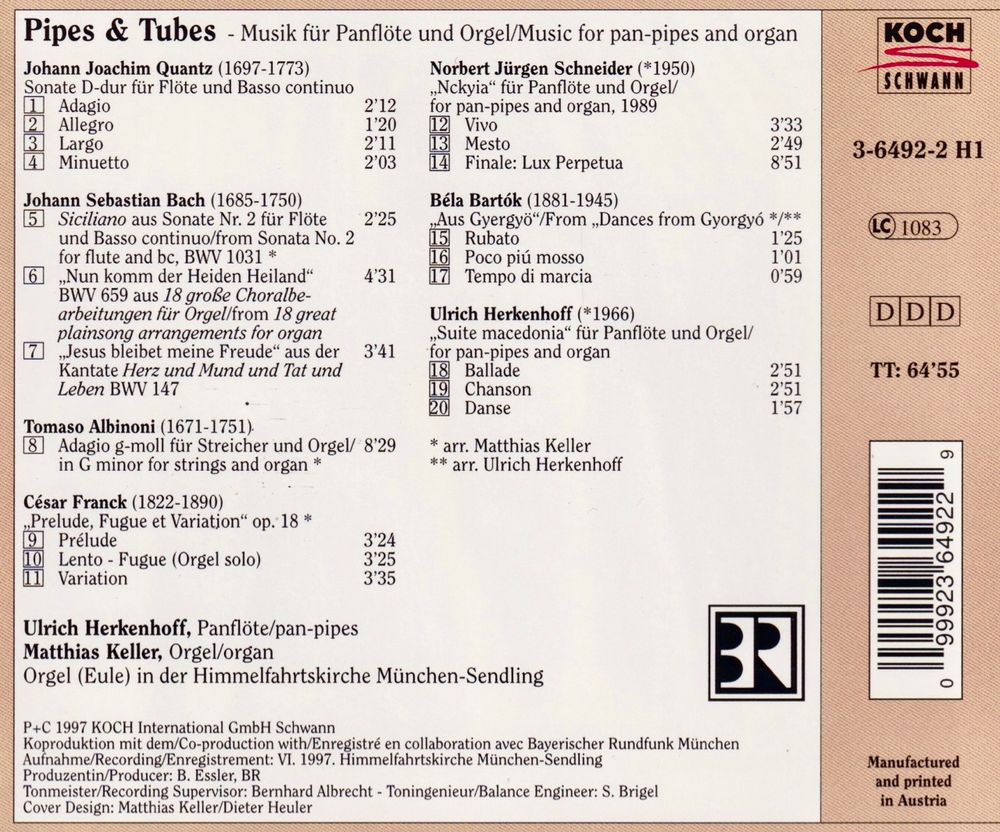
Category: Organ / Sacred Music , Recordings
Movements: 1: Vivo, 2: Mesto, 3: Finale: Lux Perpetua
Duration: 10:00
Publisher of notes/sheet music: Schott Music publisher , ED 8676 , 1999
Instrumentation: Saxophone and organ
Solo instruments: Saxophon
Introduction: NEKYIA is a world principle drawn from classicalmythology and philisophy: every superiordevelopment, every spiritual advance, every step towards perfection requires the journey down to Hades. Every mountain begins in the bottom of a valley; light cannot exist without darkness, nor heaven without hell. Nekyia is the archetype of all religions. Orpheus had to go downto Hades in order to reclaim the life or Euridice; Christ had to die in order to bear witness to life.
Additional remarks: Information in the Tonträger-Booklet: After vital physical rhythmics the meeting with the death (pain and solidification) becomes audible and flows into the cor anglais middle section of a Lamentos without company. Slowly the soloist defines the tones of an Indian Ragas on which then the final part 'Lux Perpetua' is based whose serenity integrates life and death as it were.
World premiere: 07.06.1990, Munich, St. Ursula (Concert series Musica Sacra Viva)
Performers at world premiere: Bernhard Heinrichs (ob.); Harald Feller (organ)
Records: Visage du Saxophone VDS D12, 1997
Performers on recording: 2008 a new CD was released with saxophone and organ: on the CD LE CHANT DES TÉNÈBRES with the French duo 'Saxorgue'
Fabien Chouraki (sax) and Marc Adamczewski (org) , recorded in the Noyon cathedral, Visage du Saxophone VDS 012



